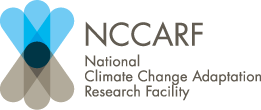You are here
Planning approaches in New South Wales
< back to all states/territories
Planning system
The Environmental Planning and Assessment Act 1979 (EP&A Act) is the legislative umbrella for land use planning in NSW. It provides for environmental planning instruments (EPIs) which establish planning controls for NSW. The EP&A Act also provides for the determination of development applications and ensures that the assessment of proposed development considers the appropriate matters. There are nine different planning approval pathways in NSW. The size and scale of the development will determine which of the assessment pathways is appropriate. The EP&A Act also includes enforcement and compliance powers in respect of unauthorised development. The Department of Planning and Environment (DPE) administers legislation on behalf of the Minister for Planning.
EPIs called state environmental planning policies (SEPPs) set the land use planning framework for a range of issues, such as infrastructure delivery and environment protection.
Regional plans are developed so that the community can set the course for its future needs at a regional scale. Regional plans will focus on strategic planning for housing, economic development, jobs growth, a natural rural environment, and lively centres for shopping, entertainment and dining.
Local environmental plans (LEPs) guide planning decisions for local government areas. They do this through zoning and development controls, which provide a framework for the way land can be used. LEPs are necessary for all local government areas in NSW.
Development control plans are not legislation, but often provide additional detail with respect to development control and assessment in each local government area.
Climate challenges
NSW has diverse landscapes and ecosystems, including Australia’s largest and highest alpine areas, part of the Murray-Darling Basin, extensive rangelands, and some of the nation’s most productive agricultural areas.
Temperature and rainfall fluctuate greatly, with large variability in seasonal and regional climatic conditions bringing heatwaves, storms, droughts, floods and bushfires, which can have devastating effects on the environment, human life and property.
Climate change will exacerbate natural variability, making it more difficult to manage our landscapes and ecosystems and the human activities that depend on them. Communities already affected by climate variability will be challenged by a climate shift, and there will be additional demands on our emergency services and health system.
Much of the state’s irrigated agriculture is located in the south-west, where the droughts and extensive floods have shown how sensitive our stocks of reliable water are to variability. The long coastal strip is home to most of the state’s population and to many high-value assets that are susceptible to storm surges, sea-level rise and increased flooding.
Climate change will affect the natural, social and economic welfare of NSW. By better understanding the impacts of climate change on our environment, communities and lifestyles, we can prepare and adapt for the future. Changes in some types of natural hazards have already been observed. For example, there have been increases in the frequency and intensity of heat waves and in heavy precipitation.
The NSW Government’s adaptNSW website provides more information on the impacts of climate change on:
- Biodiversity
- Bushfires
- East Coast Lows
- Floods and storms
- Heat
- Human Health
- Sea level and coasts
- Soil
- Water resources
The natural, social and economic systems of NSW will all be affected by climate change, requiring every sector of society to adapt.
Key planning polices/strategies
- State environmental planning policies (SEPPs) (including regional environmental plans, which are deemed SEPPs) are arranged alphabetically under the heading ‘EPIs’ on the NSW Legislation website here.
- Regional plans are located on the DPE website here.
- Local environmental plans (LEPs) are arranged alphabetically under the heading ‘EPIs’ on the NSW Legislation website here.
- Development Control Plans are located on individual NSW local council websites.
Key planning legislation
- Environmental Planning and Assessment Act 1979, located on the NSW Legislation website here.
- Environmental Planning and Assessment Regulation 2000, located on the NSW Legislation website here.
- SEPPs and LEPs – see item 3 above.
Other relevant information
NSW coastal management reforms
The NSW Government is progressing reforms to the management of coastal areas in NSW. These reforms will establish the legislative and policy settings, and the practical tools, that resilient coastal communities need to:
- protect and enhance the natural values of the coast
- ensure ongoing public access, use and enjoyment of our beaches and coastal foreshores
- support coastal communities to increase their resilience to existing and emerging coastal hazards and threats.
The reforms will encourage coastal communities to build capacity, forge strong partnerships and shape their own future on the coast.
The coastal management reforms include:
- a new legislative and regulatory framework to establish a contemporary approach to coastal management
- a new coastal management manual to better support council decision-making
- a toolkit for identifying and assessing coastal hazards and risks, and selecting and funding affordable coastal management programs.
The coastal management manual and related technical information will provide coastal communities with the best available scientific information about coastal processes and the potential impacts of climate change on coastal areas, including changes in sea levels, severe weather events and flooding.
Key references/texts/reports
http://www.legislation.nsw.gov.au/#/
http://www.planning.nsw.gov.au/
http://climatechange.environment.nsw.gov.au/
http://www.environment.nsw.gov.au/coasts/coastreforms.htm




